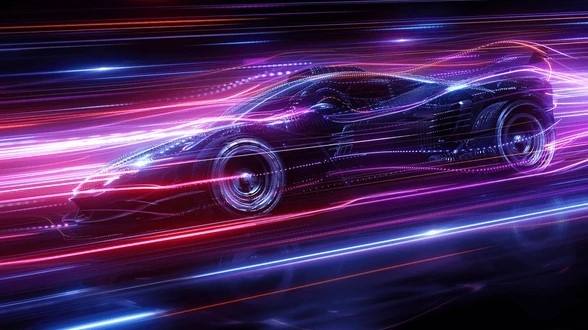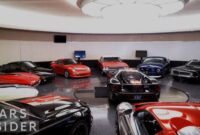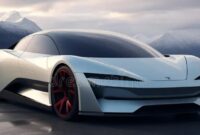Aerodynamic Design: The Hidden Secret Behind Supercar Speed
Introduction
When people think about what makes a supercar fast, they often focus on engine power, horsepower, and acceleration figures. While these factors are indeed crucial, one of the most vital yet less obvious elements behind supercar speed is aerodynamic design. Aerodynamics, the study of how air flows around and through a vehicle, plays an essential role in not only enabling supercars to reach blistering top speeds but also in maintaining stability, improving fuel efficiency, and enhancing overall performance.
Aerodynamic design is the hidden secret that allows supercars to slice through air resistance, reduce drag, and increase downforce for better grip on the road or track. It is a fine balance of physics and engineering where every curve, vent, wing, and splitter is carefully crafted to optimize airflow and control. In the realm of supercars, even the smallest aerodynamic tweaks can lead to significant improvements in speed and handling.
This article will explore the principles of aerodynamics as they apply to supercars, the key components and design elements used, the evolution of aerodynamic technology in supercar manufacturing, and the impact on performance metrics such as top speed, acceleration, and cornering. Additionally, it will highlight examples of iconic supercars with groundbreaking aerodynamic designs and discuss the future of aerodynamics in this exciting automotive segment.
1. The Basics of Aerodynamics in Automotive Design
To understand why aerodynamic design is so critical for supercars, it is important to grasp some fundamental concepts of aerodynamics.
What is Aerodynamics?
Aerodynamics is the science of how gases interact with moving bodies. In the context of vehicles, it concerns how air flows over, under, and around the car as it moves. The primary aerodynamic forces affecting a car are:
• Drag: The resistance force opposing the car’s forward motion caused by air friction and pressure differences.
• Lift/Downforce: Vertical forces generated by airflow that either lift the car off the ground or press it downward to increase traction.
• Side Forces: Lateral forces impacting stability, especially at high speeds and during cornering.
Why Does Aerodynamics Matter?
For supercars, which operate at high speeds often exceeding 200 mph, aerodynamic forces become exponentially significant. Drag reduces the car’s ability to accelerate and limits its top speed by sapping engine power. Conversely, downforce improves grip, allowing the car to corner faster without losing traction.
Drag Coefficient (Cd)
One way to quantify a car’s aerodynamic efficiency is the drag coefficient, or Cd, a dimensionless number representing how streamlined a vehicle is. The lower the Cd, the less air resistance the car experiences. Supercars typically have Cd values ranging between 0.28 and 0.35, optimized for minimal drag while balancing other performance factors.
Frontal Area
Alongside Cd, the frontal area (the car’s projected front surface area) also affects drag. Designers strive to minimize the frontal area without compromising stability or cooling requirements.
2. Key Aerodynamic Components in Supercar Design
Aerodynamics is not about one single feature but a holistic approach to vehicle shape and appendages. Here are the primary aerodynamic elements found on supercars and their functions:
1. Front Splitters
Front splitters are horizontal elements mounted beneath the front bumper. Their job is to manage airflow under the car, reducing lift and increasing front downforce. By splitting the airflow, they reduce the amount of air traveling underneath the car, which can create lift and instability at high speeds.
2. Air Dams
Air dams block or redirect airflow from entering the lower part of the car, which helps in decreasing drag and cooling the brakes. Properly designed air dams reduce turbulence and pressure build-up beneath the vehicle.
3. Vents and Ducts
Vents and ducts are strategically placed openings that guide air to cool critical components such as brakes, engine, and radiators. They also help in managing pressure differentials by allowing trapped air to escape, reducing lift and drag.
4. Side Skirts
Side skirts extend along the lower sides of the car and prevent air from flowing underneath from the sides. This reduces the amount of turbulent air under the car, increasing stability and downforce.
5. Rear Diffusers
Diffusers are designed to accelerate the airflow exiting from under the car, creating a low-pressure area that pulls the car downward, increasing rear downforce. They also help in smoothing airflow transition from underbody to the rear, reducing drag.
6. Rear Wings and Spoilers
Perhaps the most visible aerodynamic device, rear wings generate downforce by manipulating airflow over the back of the car. Spoilers can also reduce drag by controlling airflow separation, improving straight-line speed and cornering grip.
7. Active Aerodynamics
Modern supercars increasingly feature active aerodynamic elements—components that adjust in real-time based on speed, acceleration, or driving mode. Examples include deployable rear wings, adjustable front splitters, and flaps that open or close to optimize airflow for different conditions.
3. Evolution of Aerodynamics in Supercars
Aerodynamic design has evolved dramatically since the early days of supercars. Originally, supercars were designed primarily for raw power, with aerodynamics playing a secondary role. However, as speeds increased and engineers understood the importance of airflow management, aerodynamic features became integral to supercar design.
Early Supercars
Early supercars of the 1960s and 70s, such as the Lamborghini Miura and Ferrari 365 GTB/4 “Daytona,” had relatively simple, sleek shapes but lacked sophisticated aerodynamic aids. The focus was on sleek styling and engine performance.
Groundbreaking Innovations
• The Porsche 911 Turbo (930) introduced early aerodynamic elements such as the “whale tail” rear spoiler in the 1970s to combat lift.
• The Ferrari F40 in the late 1980s combined raw power with aerodynamic efficiency, featuring a large rear wing and vents for downforce and cooling.
The 1990s and 2000s
With advances in computational fluid dynamics (CFD) and wind tunnel testing, supercar aerodynamics became more refined.
• McLaren F1 introduced a low drag coefficient while maintaining downforce through clever underbody design.
• The Bugatti Veyron used active aerodynamics with deployable wings and flaps for balancing high-speed stability and drag reduction.
Modern Era
Today’s supercars employ highly advanced aerodynamic solutions.
• The McLaren P1, Ferrari LaFerrari, and Porsche 918 Spyder use active aero components that adjust dynamically.
• Hypercars like the Koenigsegg Agera RS and the Rimac Nevera achieve unprecedented levels of downforce without sacrificing top speed.
4. Aerodynamics and Performance: How Design Translates to Speed
The ultimate goal of aerodynamic design is to improve speed, stability, and control. Here is how aerodynamics impacts the core performance metrics:
Top Speed
Drag is the primary limiting factor for top speed. As speed doubles, drag increases roughly four times. Therefore, reducing drag through streamlined shapes and smooth airflow is essential for breaking speed records. Cars like the Bugatti Chiron and Hennessey Venom F5 achieve their top speeds due to exceptional aerodynamic efficiency combined with powerful engines.
Acceleration
While acceleration depends mostly on power-to-weight ratio and traction, aerodynamic drag becomes more significant as speed increases. Minimizing drag helps the car accelerate faster, especially beyond 100 mph.
Cornering and Stability
Downforce generated by aerodynamic components presses the car onto the road, improving tire grip and allowing higher cornering speeds. Without sufficient downforce, a car will lose traction and become unstable at high speeds.
Braking
Aerodynamic aids such as air brakes or deployable spoilers can increase drag to help slow the car more efficiently, reducing brake wear and improving safety.
5. Iconic Supercars Known for Aerodynamic Excellence
Several supercars have become legendary not only for power but also for their aerodynamic mastery:
McLaren P1
The P1 uses a combination of active rear wing, front splitter, and underbody diffuser to produce over 600 kg of downforce at high speeds. The active aero adjusts in milliseconds to balance drag and downforce.
Bugatti Chiron
The Chiron features an adaptive rear wing that acts as an air brake and adjusts its angle for optimum aerodynamic balance. Its aerodynamic package enables a top speed exceeding 260 mph.
Ferrari F40
An early pioneer, the F40’s large rear wing and vented body panels managed airflow to keep the car stable at high speeds despite raw power.
Koenigsegg Agera RS
This hypercar uses a combination of fixed and active aero components, including a sophisticated rear wing and front dive planes, to optimize downforce and drag reduction.
Lamborghini Aventador SVJ
With an active aerodynamic system called ALA (Aerodinamica Lamborghini Attiva), it directs airflow dynamically for enhanced cornering and straight-line speed.
6. The Future of Aerodynamics in Supercars
The future promises exciting innovations in aerodynamic design:
Active Aerodynamics Advances
More intricate and responsive active aero systems will enable supercars to adapt instantly to changing driving conditions, optimizing performance in real-time.
Material Innovations
Lightweight materials such as carbon fiber and graphene composites allow for complex shapes and structures without weight penalties.
Biomimicry
Inspired by nature, future designs may incorporate principles observed in animals, such as shark skin textures that reduce drag or bird wing shapes that improve lift and control.
Aerodynamics and Electrification
Electric supercars require cooling airflow for batteries and motors, creating new aerodynamic challenges and opportunities to blend performance and efficiency.
Conclusion
Aerodynamic design remains the hidden but decisive factor behind supercar speed, stability, and overall performance. By mastering airflow management through advanced splitters, wings, diffusers, and active systems, supercar manufacturers unlock new levels of driving excitement and engineering excellence.
As technology advances and computational tools improve, the boundaries of aerodynamic efficiency continue to expand. The supercars of tomorrow will be faster, safer, and more efficient—all thanks to the science of aerodynamics. Understanding this hidden secret helps us appreciate the beauty and precision behind every curve and contour, revealing that speed is not just about raw power, but the artful manipulation of air itself.



